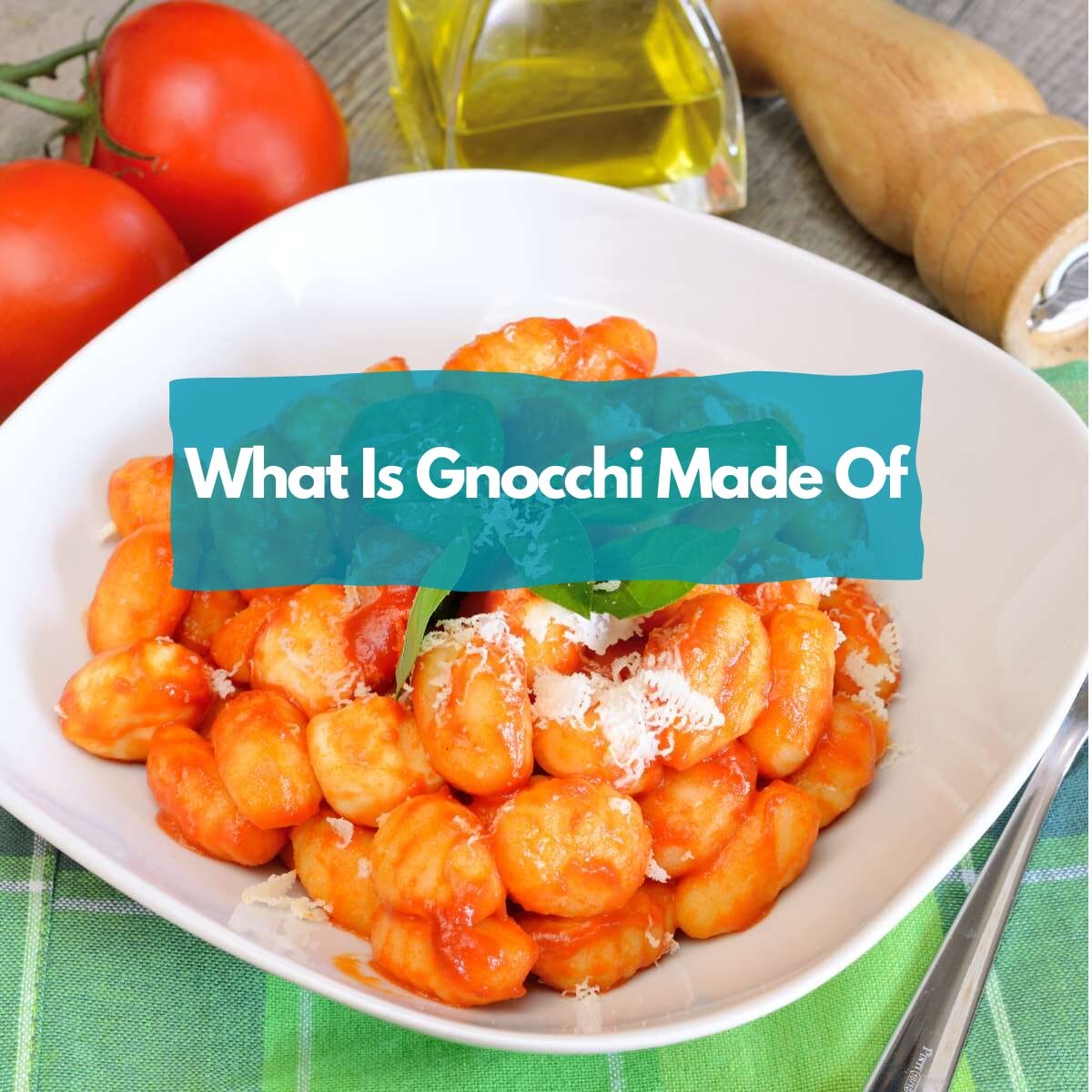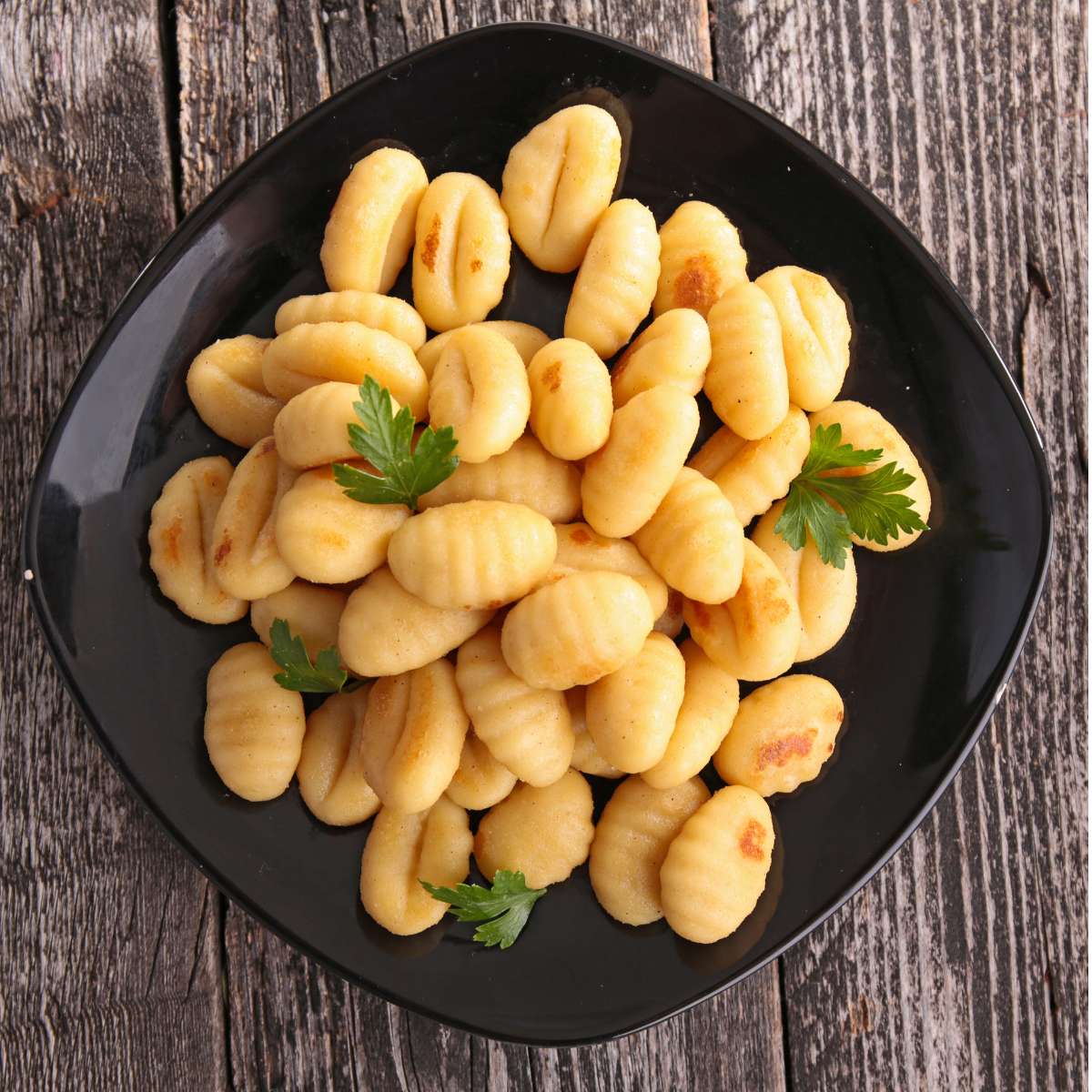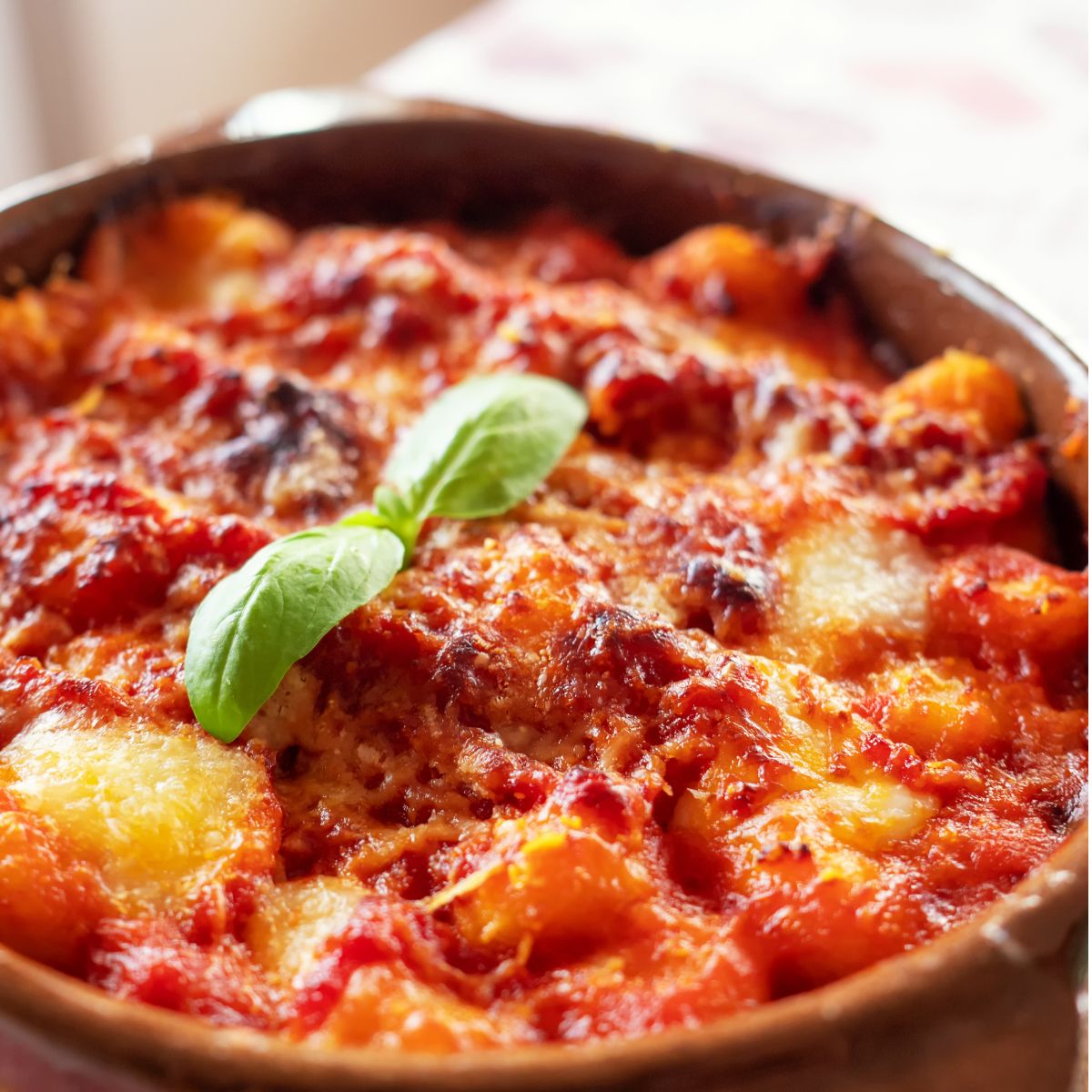Have you ever wondered, “What is gnocchi made of?” This delightful Italian dish has captivated taste buds around the world with its soft, pillowy texture and versatile flavors. Gnocchi is traditionally made from just a few basic ingredients that when combined, create something truly magical in the kitchen.
From the classic potato-based dough to innovative variations incorporating different flours and flavors, gnocchi offers a delightful exploration of Italian culinary arts. Delve into the simplicity and complexity of this beloved dish with us as we uncover the secrets behind what makes gnocchi so uniquely delicious.
What Is Gnocchi?
Gnocchi, those delightful little dumplings known for their light, pillow-like texture, are a staple in Italian cuisine. Typically, gnocchi are made from a combination of potato, flour, and egg. The process involves cooking potatoes, mashing them finely, and then mixing them with flour and sometimes egg to form a dough.
This dough is then rolled into ropes, cut into small pieces, and often pressed with a fork or a gnocchi board to create ridges that are perfect for catching sauce. While the classic version is made with potatoes, variations might include different types of flour, like semolina or whole wheat, or other ingredients, such as ricotta or spinach, to add flavour and texture.
Related Article: While exploring different pasta types, you may come across orzo pasta, a rice-shaped pasta that, like gnocchi, is versatile in the kitchen and can be used in a variety of dishes ranging from soups to salads.
What Is Gnocchi Made Of: Unveiling the Key Ingredients
Discovering what goes into making gnocchi can elevate your appreciation and skills in crafting this delightful Italian dish. Here are the key ingredients that bring gnocchi to life:
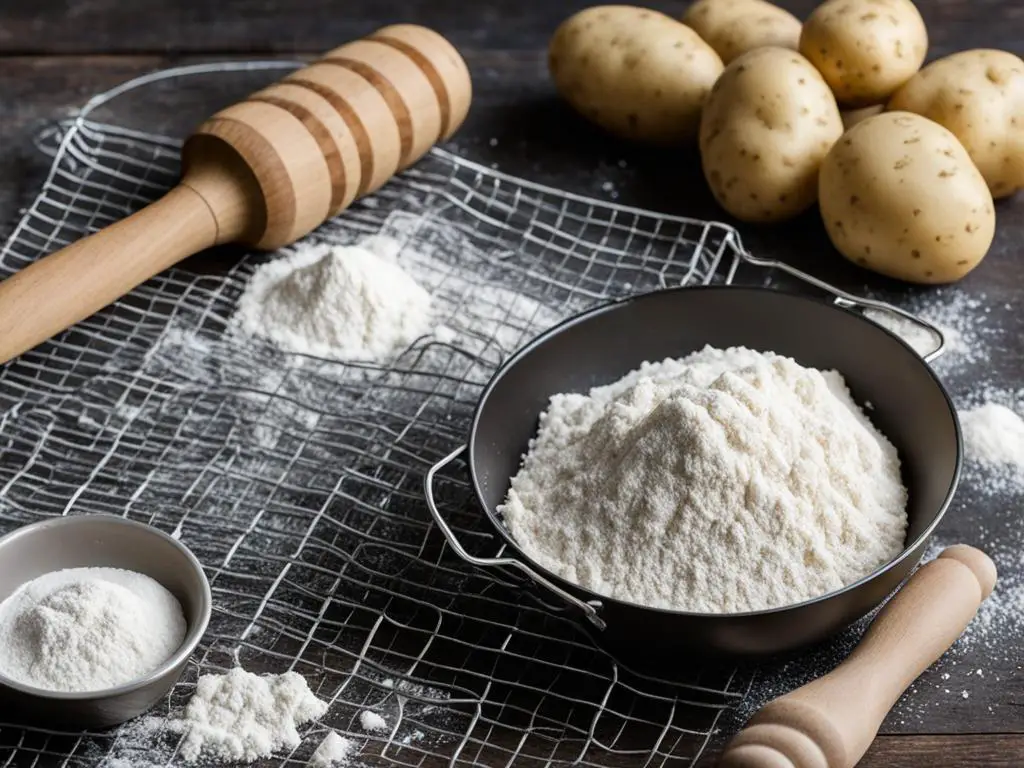
Potatoes
At the heart of traditional gnocchi are potatoes. Russet potatoes are particularly favored for their starchy quality and fluffy texture once cooked, which makes them ideal for gnocchi. The potatoes are boiled, peeled, and then mashed to form the base of the dough, providing the classic texture that gnocchi is known for.
Flour
Flour acts as the binding agent in gnocchi dough. All-purpose flour is commonly used because it has the right balance of gluten to hold the dough together without making it too tough. The flour integrates with the mashed potatoes, transforming the mixture into a malleable dough that can be shaped into dumplings.
Eggs
Eggs are incorporated into gnocchi dough to help bind the ingredients together, ensuring that they don’t fall apart during cooking. The eggs contribute to the dough’s elasticity and firmness, aiding in the formation of soft yet cohesive dumplings that maintain their shape while boiling.
| Ingredient | Role in Gnocchi | Pro Tips |
|---|---|---|
| Russet Potatoes | Provides starchy base for light and chewy gnocchi | Boil or bake, but always dry thoroughly |
| All-Purpose Flour | Binds potato mash for a cohesive dough | Use sparingly to avoid dense gnocchi |
| Eggs | Acts as a binding agent to keep gnocchi intact | Use fresh eggs for the best elasticity |
Gnocchi’s Shape and Texture: Crafting the Perfect Dumpling
Creating the perfect gnocchi involves more than mixing ingredients; it’s about perfecting their shape and texture. Here’s how you turn simple dough into those delightful, tender dumplings that make gnocchi so beloved.
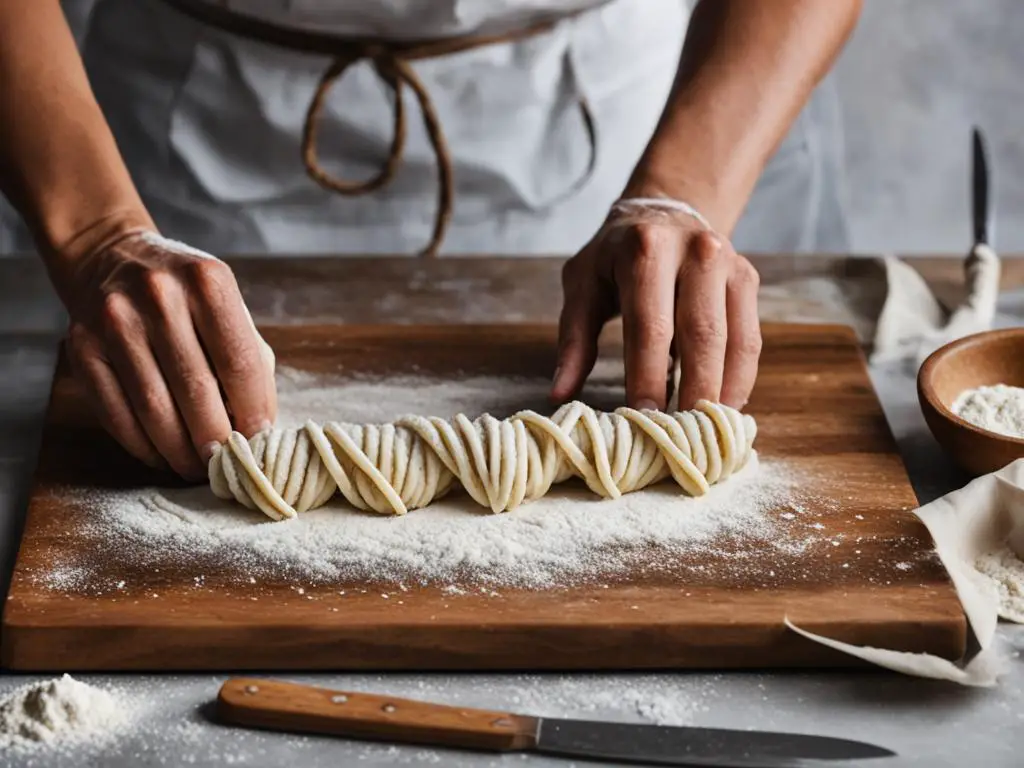
From Dough to Dumpling: The Shaping Process
Shaping gnocchi starts with dividing your prepared dough into manageable pieces. Roll each section into long, thin ropes, then cut these ropes into small, bite-sized pieces. This process isn’t just about form—it’s about preparing the gnocchi to cook evenly and absorb flavors effectively.
The Secret Behind Gnocchi’s Signature Ridges
Ever wondered why those little ridges on each gnocchi are so significant? They’re not just for the aesthetics—though they do add an artisan touch. Gnocchi with ridges are sauce catchers—each groove a reservoir for the rich, flavorful sauces you’ll pair them with. These grooves ensure each gnocchi is bursting with flavor, providing an optimal balance of pasta and sauce in every bite.
To create these ridges, gently press and roll each piece of dough across a gnocchi board or the tines of a fork, which imprints the dough with grooves that are as functional as they are attractive.
Related Article: Once you’ve mastered making gnocchi, the next step is pairing it with the perfect sides. Discover a range of complementary dishes that elevate your homemade gnocchi in our guide on what to serve with gnocchi.
Exploring Gnocchi Variations: Beyond the Classic
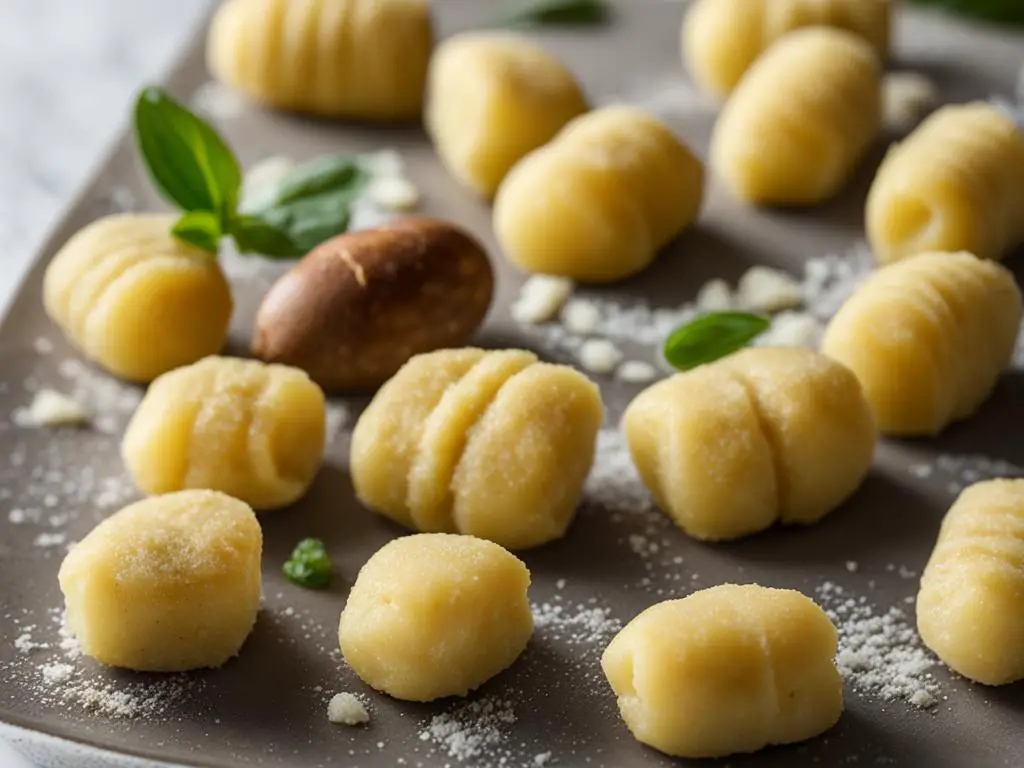
Gnocchi, a beloved Italian dish, isn’t limited to its classic potato form. Explore some delicious twists that incorporate different flavors and ingredients, offering something unique for every palate.
Sweet Potato Gnocchi
Replacing traditional potatoes with sweet potatoes not only adds a vibrant orange color but also introduces a natural sweetness that complements both savory and sweet sauces. Sweet potato gnocchi pairs wonderfully with ingredients like sage, nutmeg, or brown butter, enhancing the dish’s richness and autumnal feel.
Ricotta Gnocchi
Lighter and often quicker to prepare than potato gnocchi, ricotta gnocchi are made from ricotta cheese, flour, and eggs. This variation is delightfully fluffy and tender, absorbing sauces beautifully, perfect for a lighter meal that still satisfies the craving for comfort food.
Spinach Gnocchi
Incorporating spinach into the dough not only boosts the nutritional value but also gives the gnocchi a striking green color. Spinach gnocchi can be mixed with simple ingredients like olive oil and parmesan or served in a creamy sauce to highlight the subtle flavors of the spinach.
Semolina Gnocchi (Gnocchi alla Romana)
Unlike their boiled counterparts, semolina gnocchi are made from semolina flour, resulting in a firmer texture. They are typically baked with cheese and butter, offering a comforting, gratin-like dish often enjoyed as Gnocchi alla Romana. This variation is a heartier, oven-baked delight, differing significantly in both preparation and texture from other types of gnocchi.
Gluten-Free Gnocchi: Navigating Alternative Flour Options
If you adore gnocchi but need to avoid gluten or are watching your carb intake, the world of gluten-free alternatives offers some delightful surprises. Let’s delve into some innovative flour options that keep the gnocchi experience authentic and delicious:
- Cassava Flour Gnocchi: Cassava flour stands out in the gluten-free gnocchi realm. Its fine texture and neutral flavor make it an excellent substitute for traditional wheat flour, closely mimicking the beloved taste and feel of classic gnocchi. It’s perfect for those who want to enjoy traditional textures without gluten.
- Almond Flour and Coconut Flour: For those on a ketogenic diet, almond and coconut flours offer low-carb alternatives that bring a unique twist to gnocchi. Almond flour adds a nutty richness, while coconut flour provides a light, slightly sweet touch. Both are less traditional but create interesting and tasty variations.
- Riced Cauliflower Gnocchi: Cauliflower has become a popular low-carb substitute in various dishes, like the cauliflower mash, and gnocchi is no exception. Cauliflower rice can be used to produce a lighter, grain-free version of gnocchi, ideal for those keeping an eye on their carbohydrate intake. These gnocchi are tender and pair wonderfully with robust sauces.
These flour alternatives not only broaden the culinary landscape for those with dietary restrictions but also introduce new textures and flavors to the traditional gnocchi dish. Whether you’re gluten-free or simply exploring, each alternative offers a way to enjoy this classic Italian favorite without compromise.
Gnocchi Recipes to Try at Home
When you’re ready to elevate your gnocchi game, moving from the stovetop to the oven can open up a world of delicious possibilities. So preheat that oven, dear foodie, and prepare to be enchanted by these Italian-baked pasta dishes!
Classic Gnocchi Sorrentina: Tomato and Mozzarella Heaven
Picture each gnocchi pillow lavishly coated in a rich tomato sauce, topped with fresh basil, and smothered under a generous layer of molten mozzarella. This is Gnocchi Sorrentina, a dish that epitomizes Italian comfort food. It’s not just about the ingredients; it’s about how they come together under the broiler to create a golden-brown finish that transports you straight to the sun-drenched terraces of Sorrento.
This dish is a perfect example of how simple components can be elevated to something truly extraordinary, making it a must-try for anyone wanting to replicate the warmth of Italian cooking at home.
Baked Roman-Style Gnocchi: A Crispy Delight
Contrasting with the cheesy melt of Sorrentina, Roman-style gnocchi showcases the unique texture and flavor of semolina flour. These gnocchi are shaped, chilled, and then baked, emerging from the oven with a satisfying golden crust that is both visually appealing and delightful to taste.
This transformation in the oven highlights the dish’s historical roots, echoing meals that might have graced ancient Roman tables. It’s an ideal dish for those looking to explore the heartier side of Italian cuisine through a baked preparation that emphasizes the crisp outer texture while maintaining a soft, warm interior.
Conclusion
In our journey through the world of gnocchi, we’ve seen how this humble Italian dumpling can vary from the simplest potato-based recipes to creative adaptations using a variety of flours and additions. What is gnocchi made of? It’s made of tradition, versatility, and the love of comforting food.
It serves not only as a testament to the ingenuity of Italian cooking but also as a canvas for culinary experimentation. So, whether you stick to the traditional recipe or venture into new variations, each batch of gnocchi promises a delicious opportunity to bring a taste of Italy right to your table. Continue exploring and savoring every bite of this versatile dish, and let your culinary creativity flourish!
FAQ
Does the type of flour I use in my gnocchi recipe really matter?
Absolutely! The type of flour you choose can significantly affect the texture of your gnocchi. All-purpose flour is commonly used for its balance of gluten, which helps keep the gnocchi together without making them too tough. However, for a lighter, more delicate gnocchi, some chefs prefer “00” flour, and for gluten-free options, substitutes like rice flour or almond flour are popular choices.
Can I make gnocchi without potatoes?
Yes, you can make gnocchi without potatoes. Alternatives like ricotta gnocchi are made using ricotta cheese instead of potatoes, resulting in a lighter, often more delicate dumpling. There are also recipes using other root vegetables like sweet potatoes or squash.
What makes gnocchi dough different from pasta dough?
Gnocchi dough typically includes cooked mashed potatoes, which gives it a lighter and softer texture compared to pasta dough, which is generally made from flour and eggs. This difference in ingredients leads to gnocchi’s characteristic soft, pillowy texture, unlike the firmer, denser texture of pasta.
How do I prevent my gnocchi from becoming too dense or tough?
To avoid dense or tough gnocchi, handle the dough as little as possible. Overworking gnocchi dough can develop the gluten in the flour too much, leading to tough dumplings. Also, ensure that you do not add too much flour, as this can make the gnocchi heavy.
Is it better to boil or bake the potatoes for gnocchi?
Boiling is the more traditional method for cooking potatoes for gnocchi because it’s easier and quicker. However, baking potatoes can enhance their flavor and reduce their moisture content, which might help you achieve a lighter, fluffier gnocchi texture.
